How was Wekerletelep created and for what purpose? Let's look first at the namesake, Sándor Wekerle. According to many, he was one of the most important leaders in Hungarian history, yet the century that has passed since his death, and especially the socialist period did not really appreciate his merits.
He was born in the year of the revolution, on 14 November 1848, and died on 26 August 1921, a year after the "death" of historic Hungary, the signing of the Trianon peace dictatorship. He graduated from the University of Law in 1870, was inaugurated as a Doctor of Law in 1872, and then became an official in the Ministry of Finance. Promoted to the ranks of the office, in 1886 he became Secretary of State for Finance.
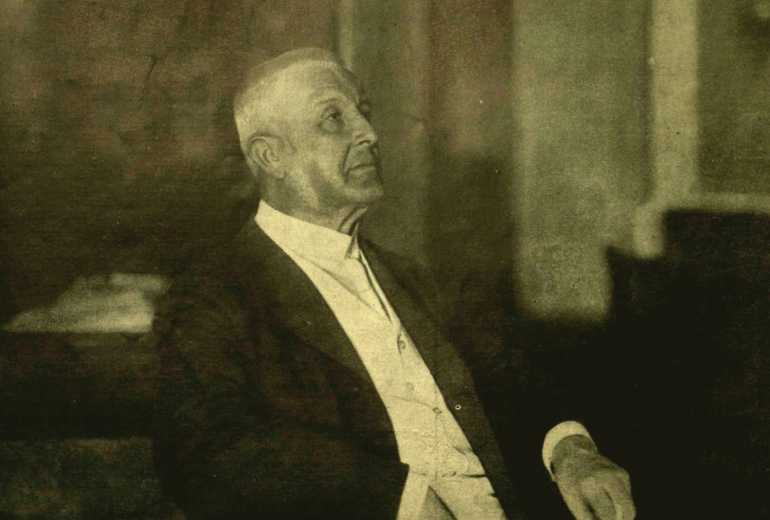
Prime Minister Sándor Wekerle in his study, when he was appointed Prime Minister (Source: Digitális Képarchívum)
Then the clerk became a politician: in 1889 he was appointed Minister of Finance. Under his Ministry of Finance, in 1891, with his personal help, at a meeting convened by him, it was decided what bridges to build in Budapest. They supported the construction of the bridges in Fővám Square and Eskü Square, but did not support building those of Boráros Square, Óbuda and opposite the Parliament, or rated them only to be built later.
In 1892, Sándor Wekerle became the first civilian [not noble born] prime minister in Hungarian history. During his lifetime, he held the position of prime minister twice more, so he was head of government a total of three times, between 1892-1896, 1906-1910 and 1917-1918. In addition, he taught financial law at the University, and in recognition of his theoretical work, he was also elected a member of the Hungarian Academy of Sciences. He introduced the gold-based currency and the institution of compulsory civil marriage.
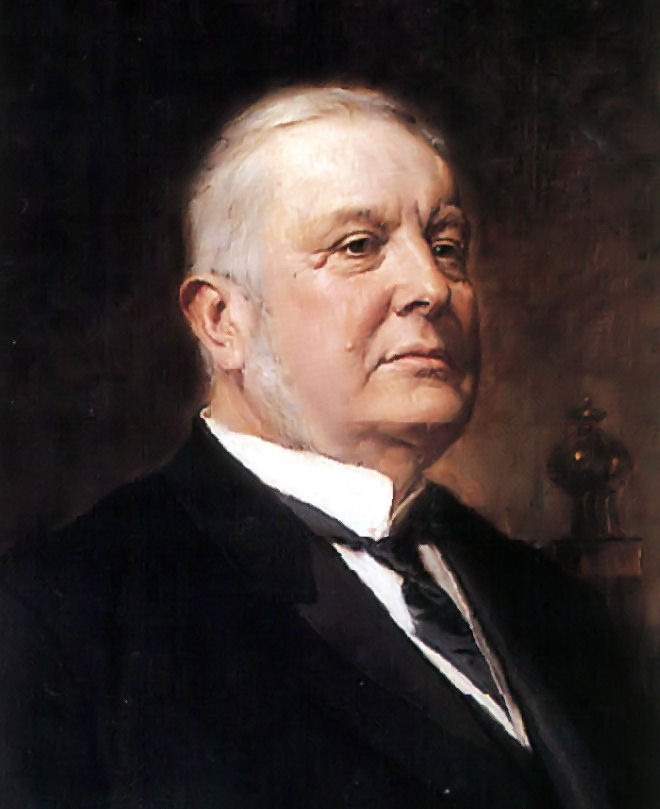
Sándor Wekerle in the 1911 painting of Gyula Benczúr
After his death, on 11 September 1921, the Vasárnapi Ujság wrote of him:
“He had no upscale family connections, no protection, but rose to the highest position because of his own diligence and great, excellent talent. Moreover, József Ferencz even granted him the privilege of being appointed prime minister twice in a row. Although for the Habsburgs, for centuries, one of the principles of domination has been that whoever once lost their trust — and this was the case with Wekerle — was never seconded to the head of government. Wekerle will have the memory that since the beginning of the constitutional era, we have not had a statesman who has done as much and as much creative work as him.”
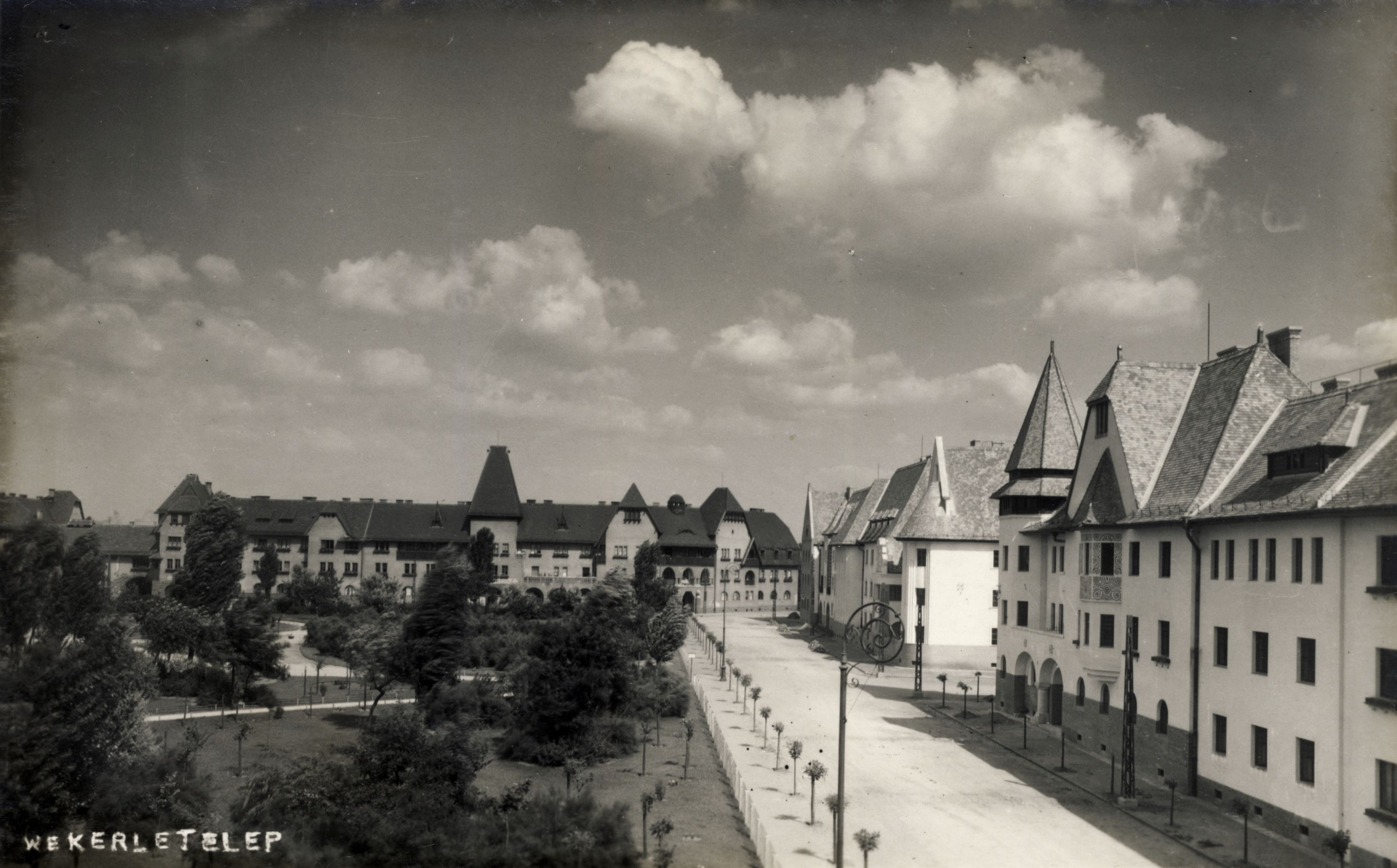
The Main Square in the Wekerletelep. It was built according to the plans of Károly Kós, later the square was named after him(Source: FSZEK Budapest Collection)
His memory is mostly preserved by the Wekerletelep in Kispest, which bears his name. The microdistrict was It was created to alleviate housing shortages at the end of the 19th and the beginning of the 20th century. By then, Budapest had become a very overcrowded city, and simple officials and workers could only rent rooms or often only beds in crowded, high-rise buildings in poor conditions. Moreover, it was not uncommon for someone to just rent a sleeping facility, meaning several people shared a bed. Although new, modern rental apartments were built, they offered housing to the middle class and the upper middle class.
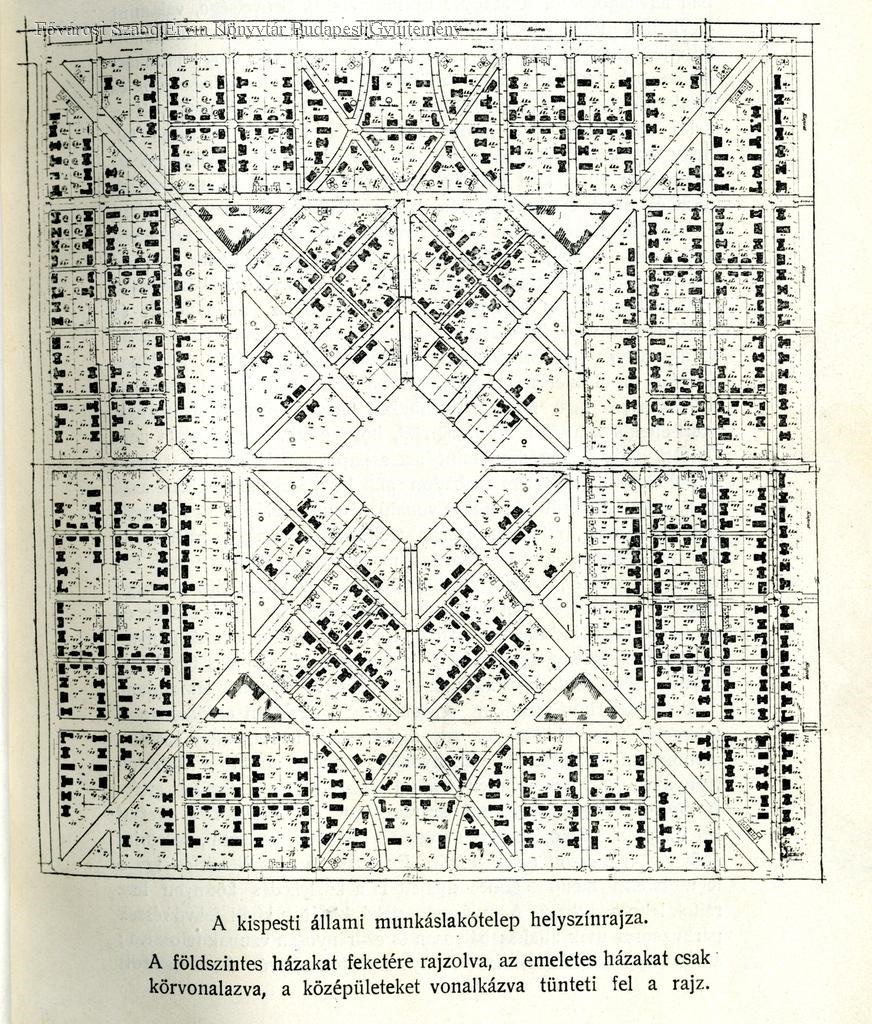 Site plan of the Kispest state workers' housing estate, ie the Wekerletelep (Source: FSZEK Budapest Collection)
Site plan of the Kispest state workers' housing estate, ie the Wekerletelep (Source: FSZEK Budapest Collection)
The problem was not unique to Budapest, all developed states faced similar challenges. Ebenezer Howard, the Englishman, suggested that suburbs should be built according to uniform plans close to crowded cities. In Hungary, the idea was embraced by the Wekerle government, and several laws were introduced to improve the living conditions of workers.
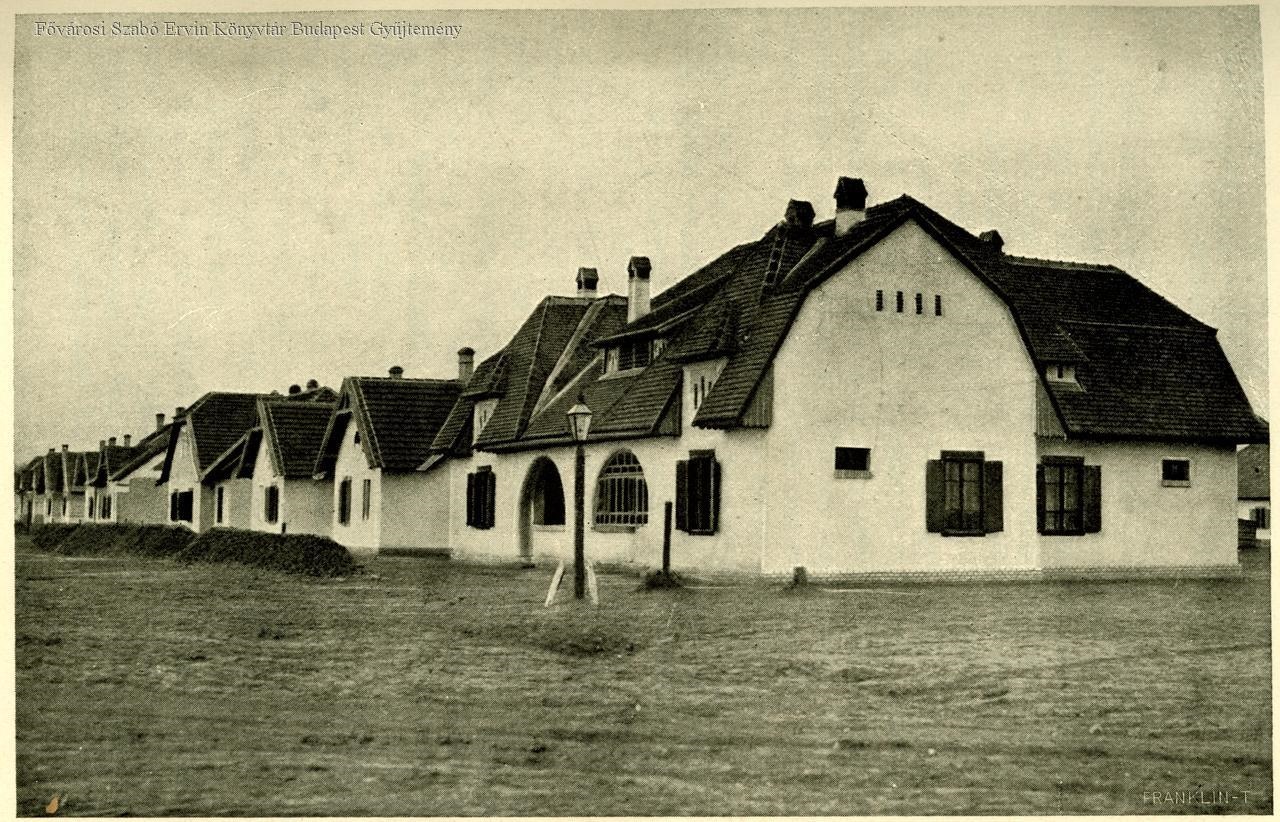 The "village" atmosphere, the design of houses using elements of folk architecture, was conscious. The aim was to create a more homely environment for the workers coming from the countryside (Source: FSZEK Budapest Collection)
The "village" atmosphere, the design of houses using elements of folk architecture, was conscious. The aim was to create a more homely environment for the workers coming from the countryside (Source: FSZEK Budapest Collection)
It was not only social considerations that guided the cabinet, but measures were expected to reduce the radicalisation and political “consolidation” of labor. They also wanted to curb inflation, which started in the years after the turn of the century and was triggered by a rise in wages forced by strikes. This intention was clearly stated in the explanatory memorandum to Act XXIX of 1908:
“The general expensiveness, the depressing weight of which all social classes complain about, is certainly not the last reason for the multiple increases in wages forced by the working class, the burden of which in the form of higher production costs and the price of consumer goods, through chain-linking, all economic branches and outcomes the worker himself is also forced to wear. (…) It is indisputable that making the livelihood of the worker more favourable is also a huge lever for the cultural development and moral rise of the people referred to manual labour. In addition, it strongly hinders the flow of emigration stemming from the instinct of subsistence, increases attachment to the homeland and thus paves the way for the development of the political maturity and sobriety of the working class in a way that allows for the widest possible expansion of popular rights to politically mature populations."
And the said law said that for 12 million crowns the government could buy land to build housing on it specifically for the working class. One of the selected areas was on the border of Kispest, which at that time was still an independent settlement, did not belong to the capital. The goal was to build quality homes for 6-10,000 working families. Incidentally, the law not only provided for the investment in Kispest, but a similar construction was planned in Óhegy, in Kőbánya.
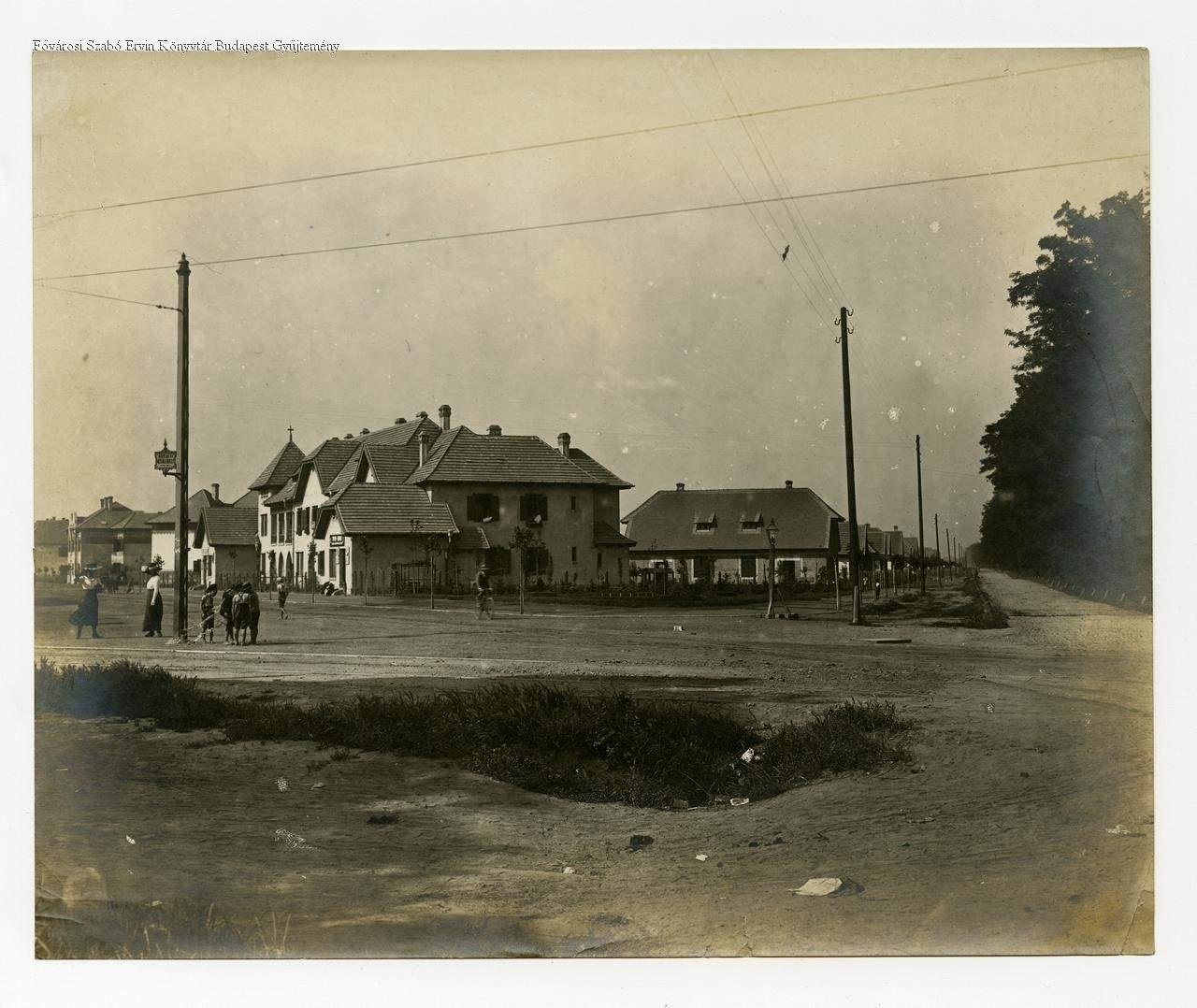
The state workers' housing estate in Kispest in 1910, at the beginning of the constructions (Source: FSZEK Budapest Collection)
The construction of the Kispest state workers' housing estate - this was the official name of the Wekerletelep - began in 1909. A public tender was announced for the plans, for which a total of 60 tenders were received, 30 for regulation and also 30 for buildings. The regulations adopted for the area adopted a very windy incorporation, barely 27 per cent of the whole area was just streets and squares, the remaining other areas were planned to be built in one-third proportion, the rest was gardens and courtyards. A total of 50,000 trees, including 16,000 fruit trees, were planted on the site. Residents also took advantage of the gardens, many planting currants, which sometimes generated significant income: in 1917, for example, from the currants sold, residents earned four times their annual rent.
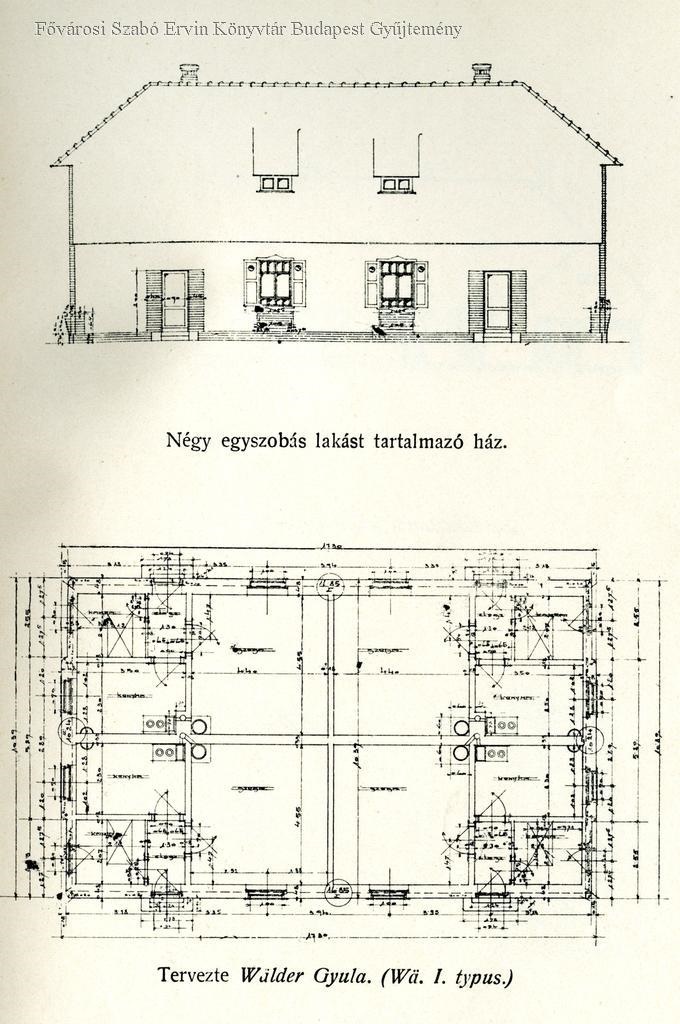
The smallest flats were one-room (Source: FSZEK Budapest Collection)
The works lasted for more than two decades, with 1,007 houses built by 1925, with a total of 4,412 apartments. The houses were 2-12 apartment buildings. The plans were made by many architects, including Lajos Schodits, Béla Eberling, Dezső Zrumeczky, Gyula Wälder, Dénes Györgyi or Aladár Árkay, István Bierbauer and Róbert Fleischl. In the design of the settlement, the characteristics of folk architecture return. The construction was supervised by Károly Kós until 1913 - who also took the plans of the Main Square on paper - and then by Zoltán Tornallyay.
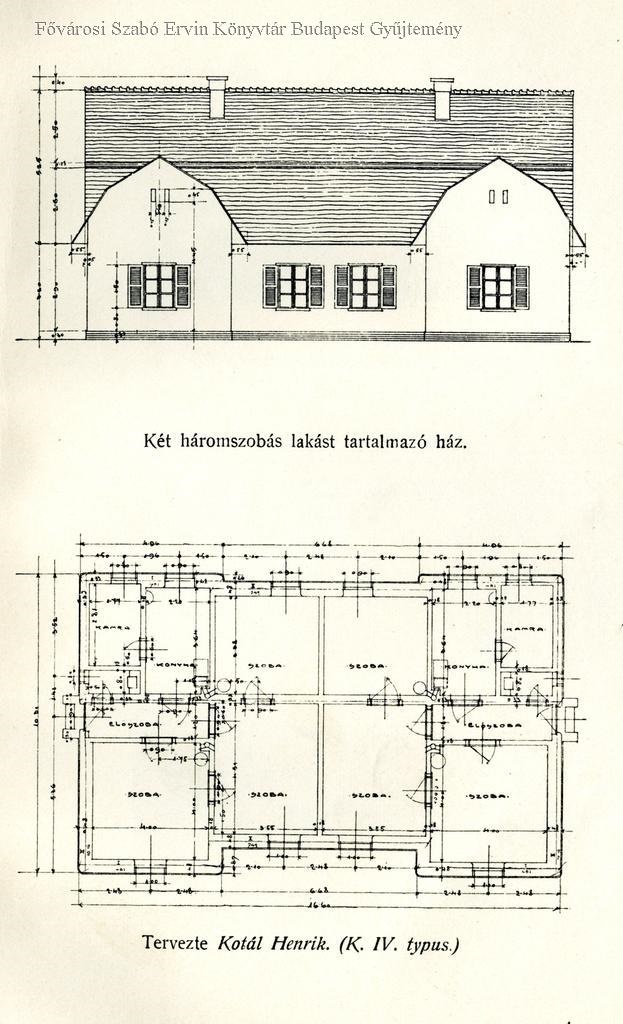
Plan of a house with two three-room flats (Source: FSZEK Budapest Collection)
Not only apartments, but also schools, a kindergarten, a post office and a police building were built, and in 1930 the Church of St. Joseph the Worker in Wekerle, designed by Béla Heintz, was completed. Not only workers but also civil servants and state employees moved into the rental flats. The flats were typically semi-comfortable, with rents lower than those of similar flats in the capital’s tenements.
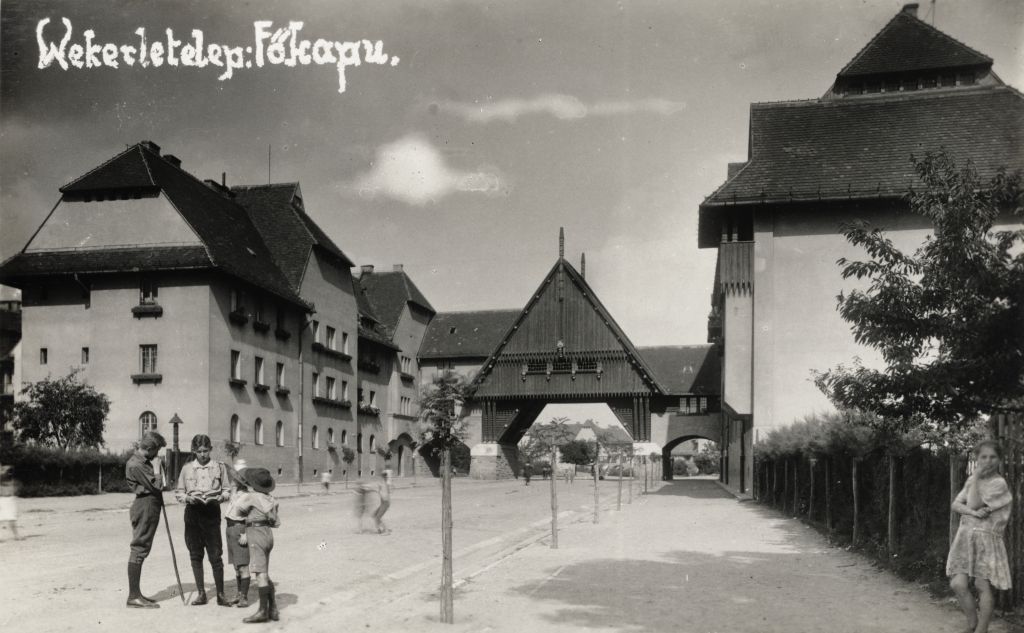 The main gate of the power plant, the Zrumeczky Gate, behind the Main Square in 1928 (Source: Fortepan / No.: 128992)
The main gate of the power plant, the Zrumeczky Gate, behind the Main Square in 1928 (Source: Fortepan / No.: 128992)
The housing estate was already called during its construction as the Wekerletelep, because although Sándor Wekerle did not live until the end of the construction, everyone connected the workers' housing estate to him. 10 years ago, in 2011, the Wekerletelep became a historical monument.
Cover Photo: One of the typical houses of the Wekerletelep in Kós Károly Square (Photo: Péter Bukovszki / pestbuda.hu)

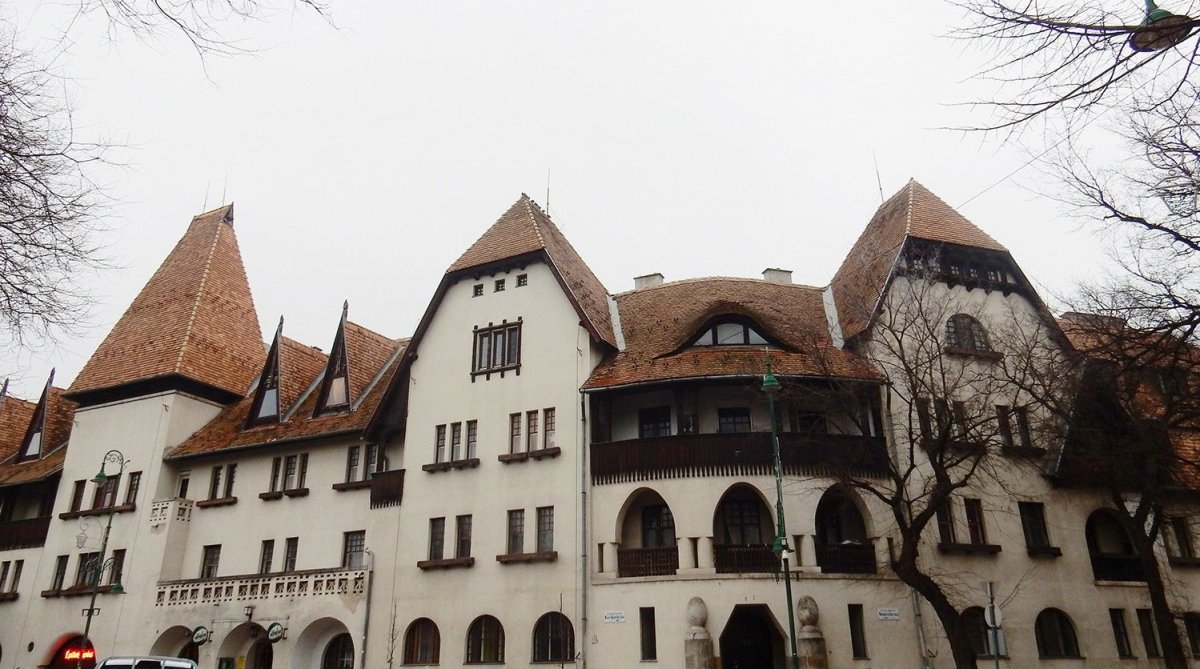





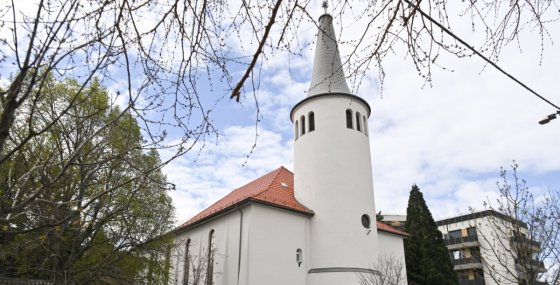




























Hozzászólások
Log in or register to comment!
Login Registration